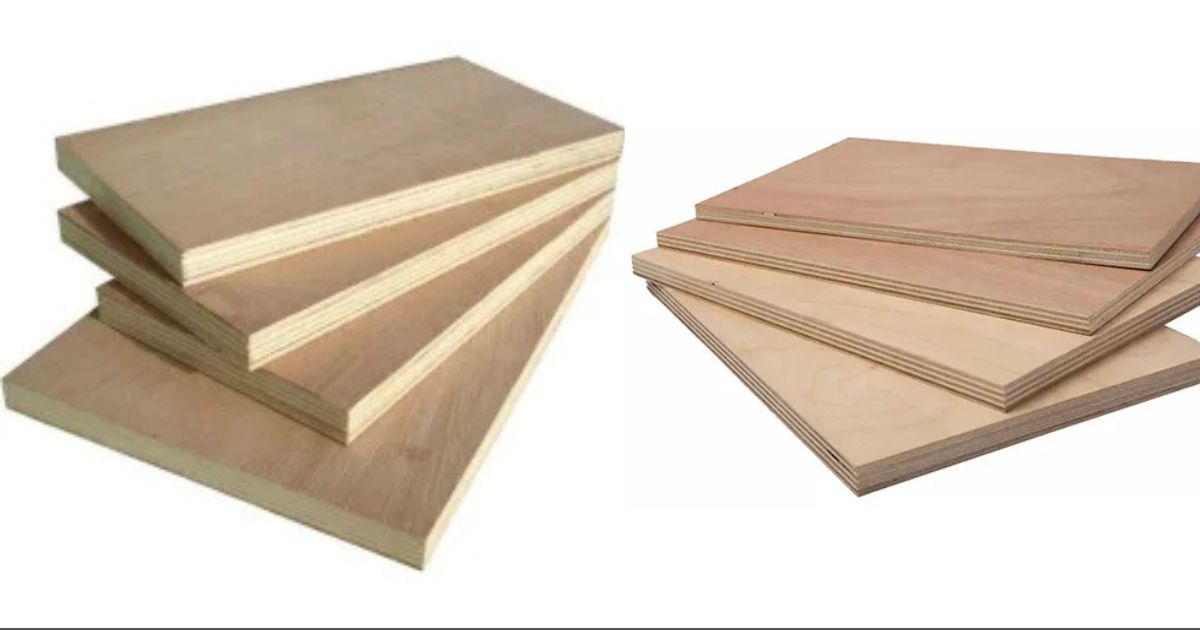When you walk into a timber yard you’re greeted by stacks of panels in a bewildering range of plywood sizes—different thicknesses, lengths, and widths, each designed for a specific purpose. Picking the wrong sheet can inflate costs, create structural weaknesses, or stall an otherwise smooth project. Below are the six mistakes professionals and DIYers most often make—and how to sidestep them.
1. Treating All Thicknesses as Interchangeable
A 12 mm panel is not a lighter version of 18 mm; it’s a sheet engineered for a different duty cycle. Backs of wardrobes, lightweight partitions, and drawer bottoms can live happily at 6–9 mm, while load-bearing shelves or kitchen carcasses demand 16–19 mm. Using a panel that’s too thin risks sagging and screw pull-out; one that’s overly thick adds dead weight, cost, and hinges that never self-close properly.
2. Ignoring Span and Load Calculations
Plywood is stiff perpendicular to its grain, but span tables still matter. A bookshelf two feet wide can survive in 16 mm material; stretch it to three feet and it will bow unless you step up the thickness, add a nosing, or introduce a central divider. Always use published deflection limits (L/180 for cabinetry, L/240 for flooring) to match sheet thickness to shelf length and anticipated load.
3. Forgetting Finish Tolerance
Finishing processes—calibration sanding, veneer pressing, or decorative lamination—can remove up to 0.8 mm of material. Selecting plywood exactly at the minimum finished size leaves no buffer, causing doors to fall out of flush or visible steps between modules. Order one step up in nominal thickness and machine it down after finishing; you’ll achieve tighter reveals and cleaner mitres.
4. Failing to Optimise Cutting Maps
A 2440 × 1220 mm sheet seems generous until you start breaking it down. Poor cutting plans generate off-cuts that can’t be reused, effectively turning expensive boards into scrap. Before buying, create an optimisation diagram (many panel-cutting apps do this for free). Align grain direction in the plan, leave kerf allowances, and verify that every required part nests efficiently. You’ll often discover that two smaller sheets yield less waste than one oversize panel.
5. Overlooking Transport and Site Access
Sheet goods are only valuable if they arrive intact. A 3050 mm-long board may fit a CNC bed but not the elevator or stairwell of a high-rise jobsite. Likewise, a panel wider than 1250 mm might ride on the workshop truck but can’t maneuver through a residential doorway. Measure the tightest pinch-point from truck to final location, then choose sheet dimensions that travel the entire path without excessive man-handling or on-site cutting.
6. Mixing Metric and Imperial Conventions
Many suppliers still label thicknesses in fractions of an inch while lengths and widths are shown in millimetres. Ordering “three-quarter” one day and 19 mm the next can yield panels that differ by a critical 0.5 mm. Standardise on one system, write it into purchase orders, and double-check invoices. Consistent measurement prevents cumulative errors that throw cabinet runs out of level or create unsightly gaps.
Final Thoughts
Selecting plywood is more than grabbing the nearest sheet that looks flat. Match thickness to structural load, plan your cuts to curb waste, allow for finishing tolerance, and ensure the panel can actually reach the installation site. Avoid these common pitfalls, and you’ll turn a pile of engineered wood into furniture that is strong, accurate, and profitable—on the first try.


